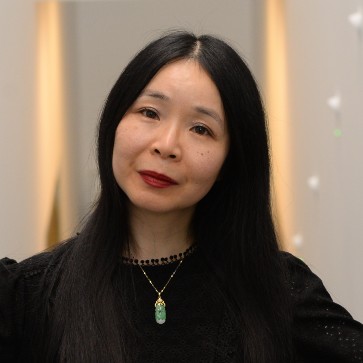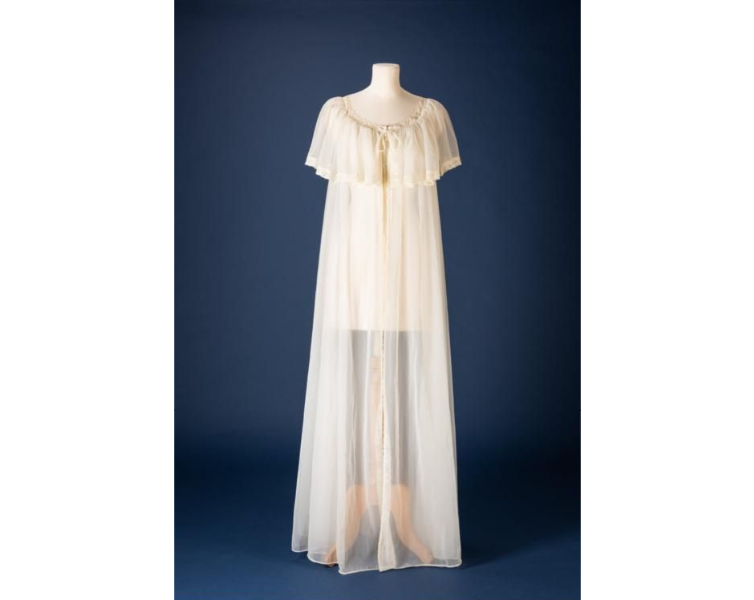
 Click image for a larger view
Click image for a larger viewNegligée – belonged to Vivien Leigh c. 1960
The Royal Albert Memorial Museum and Art Gallery, Exeter
Accession number: 21/2021
Jennifer Lee Tsai

Beguiling vision. A flash. Flutter of soot eyelashes,
eyes that looked violet, gray, blue, tan and nearly every other colour in the spectrum. 1
Her cryptic smile, expressing an alchemy of emotions.
See her wearing this diaphanous garment,
made of sheer white nylon chiffon, edged with lace and floral embroidery,
circa 1960s, a gift to Vivien from her mother Gertrude,
measurements – height of 150cm.
Delicate demi-goddess, irrevocably poised.
Celluloid adored her but she loved the stage.
As a child, I first watched V. as Scarlett
with my mother on a TV screen in Birkenhead,
our perfect suburban house before everything became unstable.
Innocent to Hollywood racism, the perniciousness of Margaret Mitchell’s novel and the film.
But she – Scarlett – captivated us both – her incandescence –
bursting like a fiery comet on screen, a blaze –
telling us that there might be hope after destitution and struggle,
when everything has been lost, that Tomorrow is another day!
Did I, we – feel a connection to the hint of Asian ancestry
Vivien had from her maternal inheritance? – Irish, Anglo-Indian, Armenian.
Born 5 November, Darjeeling, 1913 – a time when India was under British rule.
Imagine V. in this cape-like negligee at home, its thin overshirt, short sleeves which fall
from the shoulders as she holds a cigarette, unaware as the ash drops
and besmirches the left hand side, just as love burns a hole now in my life,
leaving a sting, a kiss, in these post-apocalyptic times
when we have all felt the loneliness of isolation.
I think of V. in her multitude of roles – as the ballet dancer turned streetwalker
in ‘Waterloo Bridge’ telling us that now everything is going to take a turn for the better 2,
Juliet, Cleopatra, Anna Karenina, Lady Macbeth,
Blanche du Bois – ‘playing her tipped me into madness’3 –
nobody, nobody, was tender and trusting as she was. But people like you abused her, and forced her to change.
Her bipolar disorder, – the wild fury that lingered beneath the surface.
The depths that lie within us all, bring it out, become real, show me
as I listen now to a melody called ‘When Almonds Blossomed’ by a Georgian composer
– a quiet, intimate piece that invites you on a quest, to dance.
Towards the end of his life, Laurence Olivier watched a film with Vivien,
and weeping, said, This, this was love.
And I wonder at this moment, thinking of Anne Carson’s words
about why tragedy exists, because you are full of rage4,
and why I am full of rage, because I am full of grief.
I want to waft around in a voluminous, floaty nightgown
in an Art Nouveau hotel, wearing this for my beloved, to forget and live again.
Rise above the personal, yet historical, trauma of my maternal heritage,
transcend it like an angel, is that possible, to realise that sometimes there’s God so quickly.5
2 The character of Myra Lester’s words in ‘Waterloo Bridge’
3 Vivien commenting on the role of Blanche DuBois in A Streetcar Named Desire
4 from Anne Carson’s Grief Lessons: Four Plays By Euripides
5 Blanche Du Bois in A Streetcar